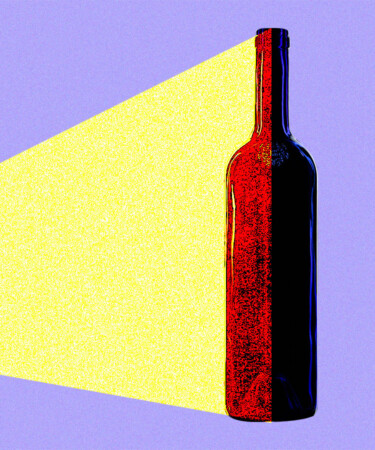Science plays an essential role in winemaking, but chemical reactions don’t end when bottles leave the winery. In fact, wine is often described as a “living” beverage due to its ability to evolve over time, and its susceptibility to the influence of simple environmental conditions.
While most drinkers know the impact temperature plays during wine storage, one issue is less discussed: light strike. The term may sound like it’s plucked from the pages of a science fiction novel but it actually refers to the degradation of wine brought about by exposure to sunlight. To learn more about its causes and effects, VinePair spoke with Courtney Wieland, sommelier and wine director at Thatcher’s Wine.
Despite its mysterious name, this phenomenon can occur as frequently as cork and temperature issues. According to Wieland, light strike occurs when bottles are exposed to extreme levels of light, which can have a notable effect on the quality of the wine. As UV rays from the sun or artificial light sources like fluorescent lamps hit the bottles they react with components in the wine. Some studies have even shown a correlation between light strike and the development of certain sulfur compounds, which can give the wine an unpleasant scent and taste.
“When the bottles are in direct contact with light it can alter the wine and take away from the overall brightness and pronounced nuances we love and enjoy,” Wieland says. Though green and brown colored bottles help cut down the impact of light strike they don’t prevent it completely, especially for delicate wines.
Wieland notes that white wines, rosés, and light reds, such as Pinot Noir, tend to be the most susceptible to light strike. “Wines that are affected by light strike can quickly oxidize and seem duller than those kept away from light sources,” she says.
Creating adequate wine storage in your home can be an ordeal, but preventing degradation from light strike is easy. For those with wine fridges, Wieland suggests turning the fridge so that the doors are not directly hit by sunlight — especially if the fridge contains clear doors.
Light strike may not be your No. 1 concern regarding storage, but it should be on your radar. “Many wine shops have large windows with little to no light protection for bottles that sit on shelves for unknown periods of time,” she says. With that in mind, it’s even more important to find a cool, dark place to keep your bottles safe once you’ve got them home.
